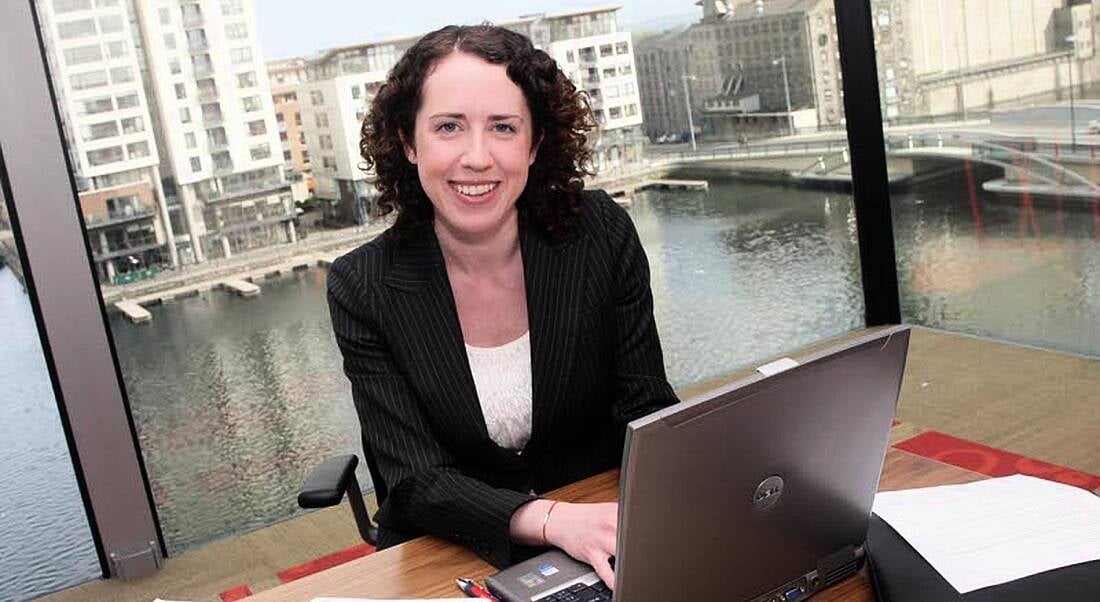One of the most vibrant and important job roles of the 21st century will be that of the data scientist, but not enough teachers in Ireland know this, warned the head of Accenture’s 40-strong analytics division in Dublin, Edel Lynch.
Accenture, in collaboration with the Irish Maths Association, has attempted to reverse this anomaly and so far more than 250 students in 12 schools across Ireland have taken part in a pilot programme that allows the transition-year students to join the dots between analytics and running a start-up business.
The programme is to be formally launched to more schools in February and is supported by the Irish Maths Association.
The objective of the programme is to allow the kids to run their own business – for argument’s sake, Seachlaid Ltd – and use maths and statistics as tools to rationally solve challenges in real-world situations.
The schools included Good Counsel College in Wexford, St Mary’s College in Wicklow, St Jarlath’s College in Galway, Carandonagh CS in Donegal, Castleknock College in Dublin, Presentation Secondary in Tipperary, Colaiste Eamonn Ris in Wexford, Our Lady of Mercy Secondary Schol in Waterford, Davis College in Cork and St Brigid’s Convent of Mercy Secondary in Galway.
The students used analytics to gain insights and make informed business decisions.
Lynch said the idea was to provide the students with an insight into a career in analytics.
“We presented this as an idea to maths teachers at UCD and the interest was massive. There are kids who love maths but the problem is they aren’t aware of the career opportunities.
“The data scientist is going to be one of the hottest jobs of the 21st century – it’s already an area in hot demand – but the teachers themselves weren’t aware of that.
Lynch’s views echo recent research by Accenture in collaboration with Silicon Republic’s Women Invent Tomorrow campaign involving 1,000 female secondary-school students, and young women aged 18-23, which found one in four teachers saying they believe promotion of traditional “girl career paths”, such as nursing and teaching, contribute to the stereotype that STEM subjects are more suited to boys.
“We created a module for transition-year students that took them through the challenges facing an Irish company and we gave them the sales data, the product data and they had to figure out answers from insights and come up with solutions.”
“The key is to make it real. We see it as a nice merging of the maths class and the business studies class. The guys in my team have embraced this and are passionate to get this into more schools,” said Lynch.
Lynch said she is a proponent of the Jump Math methodology developed by Canadian mathematician John Mighton that is being trialled in Irish schools and which fosters a spirit of bringing all students in a class along at the same pace.
“It is mainly targeted at primary schools and it is important when teaching maths to get the fundamentals addressed.
“It is being piloted in 20 schools in Ireland right now and in terms of making maths more engaging it has substantially improved the performance of students.”
Analytics is a business enabler
Lynch heads up Accenture’s analytics division in Dublin, where 40 people are working on next-generation solutions, including analytics systems for sports fans to follow and predict match outcomes, anti-fraud and compliance systems and safe city policing systems for the city of Singapore.
She said the team consists of a mix of graduates and experienced PhDs with experience of a variety of industries.
“At graduate level we’re so far very impressed with the quality coming from Irish universities and people who are coming to Ireland from overseas. It’s a balancing act in terms of matching the skills of people who understand analytics, have a deep technical capability and can apply these skills to a real-world business problem.”
She said it is important when talking about analytics and big data that firms never lose sight of the business problem they are trying to address.
“There is a lot of interest in analytics but businesses are investing in expensive analytics software but are not sure what they are trying to achieve.
“It is about articulating what is the business issue and the optimum outcome. It seems basic and straightforward but you would be surprised at the lack of clarity as to why the investment is being made.
“Stand back, understand the business case for big data and analytics and focus on that.”




